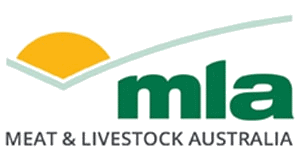Updated 11 April 2025:
Last week, the US Government announced a 10% baseline tariff on Australian goods entering the US, including beef, sheepmeat and goatmeat. The tariff took effect on 12:01am 5 April 2025 (US). Contrary to some initial media reports, no ban was applied to Australian beef exports to the US.
Prior to this, Australian red meat products entered the US tariff-free under the Australia-United States Free Trade Agreement.
On 9 April (US), US President Donald Trump subsequently announced that reciprocal tariffs (i.e. the tariffs applied to numerous countries above the 10% baseline) would be paused for 90 days and a 10% tariff would apply instead.
This announcement did not impact Australia, with the baseline tariff remaining at 10%.
FAQs
While it is disappointing that the US has imposed a 10% tariff on Australian red meat, producers can be assured there is still high demand for our beef, sheepmeat and goatmeat in the US and in more than 100 global markets. Our export trade will continue to service global consumers.
Our industry operates in a mature and diverse trading environment (see the ‘How are Australian red meat exports performing across other global markets?’ FAQ below).
It’s important to note that tariffs have previously been imposed on Australian red meat products from other nations with minimal impact to producer returns. While a range of factors can impact livestock prices, it is not expected that these tariffs will cause a major disruption to the domestic market. Incredibly strong international demand for Australian red meat will continue to support livestock prices.
No. The US Government has stated that only reciprocal tariffs (i.e. the tariffs applied to numerous countries above the 10% baseline) would be paused for 90 days and a 10% tariff would apply instead.
This does not impact Australia, with the baseline tariff remaining at 10%.
MLA is part of an industry taskforce which is working closely with the Australian government to support US market access.
Via its international offices, MLA will continue to support the sector to grow global demand for our beef, sheepmeat and goatmeat by:
- supporting improved access to global markets
- developing more markets alongside commercial partners
- promoting Australian red meat’s strong attributes as a guaranteed safe, healthy and delicious product.
- creating demand with high impact in-country marketing campaigns.
MLA’s international offices work in market to support Australian exports. Offices are based in North America, Japan, South Korea, Dubai, United Kingdom, Singapore, Indonesia and Greater China.
US consumer demand for high-quality Australian product is expected to remain strong despite the tariffs.
Major grocery retailers and hamburger chains often rely on a combination of imported lean and higher-fat US beef to achieve the lean ground beef Americans love. Australia supplies around 30% of lean ground beef imported to the United States.
Australian beef, sheepmeat and goatmeat imports contribute to stable food supply and prices in the US, particularly when their national herd is low. Currently, the US national herd is at a 70-year low. The US will continue to be a focus for Australian red meat exports despite these tariffs.
Economic analysis conducted by Steiner Consulting on behalf of Meat & Livestock Australia estimates that a 10% tariff on imported Australian lean ground beef will cost Americans an additional $180 million/year.
Australian exports ensure American consumers can reliably enjoy lamb and goatmeat as local demand outstrips US domestic supply.
The Australian red meat industry’s official response can be found in this statement from the Red Meat Advisory Council (RMAC). MLA’s statement can be found here.
Australia exported $5.7 billion worth of red meat to the US last year. Shipments in 2024 comprised of:
- 394,716 tonnes of beef worth $4.16 billion
- 104,210 tonnes of sheepmeat worth $1.35 billion
- 22,559 tonnes of goatmeat worth $188.5 million.
The international exports outlook remains very robust and Australian producers can be assured that there are more than 100 strong markets around the world for our red meat.
Here’s a look at what Australian red meat exports to other major markets are worth:
- China = $3.9 billion
- Japan = $2.6 billion
- Korea = $2.5 billion
- Middle East/North Africa = $2 billion.
The industry is in a good position from a market access standpoint. We are in the early years of the Australia-UK free trade agreement (FTA), with improved market access for Australian red meat over a 10-year phase-in period.
More recently, negotiations have concluded on the Australia-UAE CEPA (comprehensive economic partnership agreement) to eliminate tariffs on frozen beef and sheepmeat, and the Australia-India ECTA (economic cooperation and trade agreement) has eliminated the previous 30% tariff on sheepmeat.
Globally, 91% of beef, 74% of sheepmeat and 89% of goatmeat exports are covered under existing FTAs which remain effective.
There is no ban on US beef exports to Australia. Australia has previously completed science-based biosecurity and food safety assessments that would allow the trade in US beef from cattle born and raised in the US.
However, the US has also asked for access to Australia for beef from cattle raised in Mexico or Canada and processed and subsequently exported from the US. This revised request is undergoing the normal Australian science-based assessment to protect our biosecurity.



